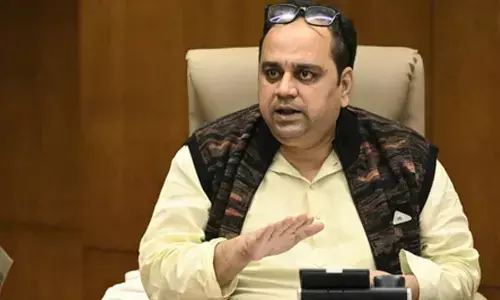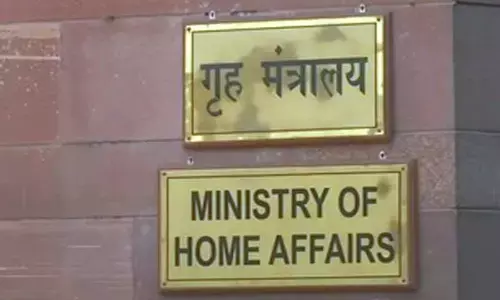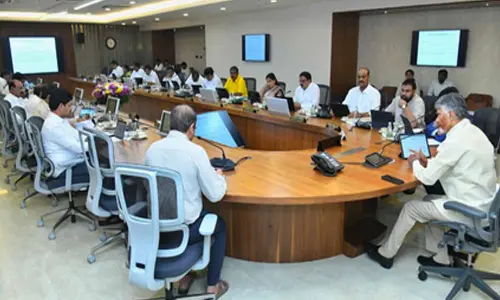Newer Hues add to the allure

Nallan Chakravarthy Murthy, the renowned classical musician, former Deputy Director of IICT, and Former Professor, MS University, Baroda may have been a chemical engineer by profession.
By penning newer compositions in the not so attempted ragas, Nallan Chakaravarthy Murthy made splendid contribution to Carnatic classical music
 Nallan Chakravarthy Murthy, the renowned classical musician, former Deputy Director of IICT, and Former Professor, MS University, Baroda may have been a chemical engineer by profession. But, he is today, better known for his music and for his literary contribution to Carnatic music. His music treatise, “Apoorvaraga Krithimanjari” documents 100 new compositions in the ragas hitherto unattempted by any of the earlier Vaggeyakaras. What more, they cover all the 72 Mela Karthas, a gigantic task he had fulfilled in a matter of just five months. He had penned 10 books on music so far.
Nallan Chakravarthy Murthy, the renowned classical musician, former Deputy Director of IICT, and Former Professor, MS University, Baroda may have been a chemical engineer by profession. But, he is today, better known for his music and for his literary contribution to Carnatic music. His music treatise, “Apoorvaraga Krithimanjari” documents 100 new compositions in the ragas hitherto unattempted by any of the earlier Vaggeyakaras. What more, they cover all the 72 Mela Karthas, a gigantic task he had fulfilled in a matter of just five months. He had penned 10 books on music so far.
Taking a close look at the contents of this book “Apoorvaraga Krithimanjari”, one would find that the lyrics are simple in style, but deep in Bhava, incorporating many puranic episodes. The words are aesthetically chosen and they enhance the beauty of the composition giving good scope to the musician to enliven while singing. One can feel such an approach in the works of the trinity too. Murthy tried to make the lyrics relate to the name of the raga and obviously the Raga Mudra (i.e., the name of the raga) appears in 40 of the compositions while ‘Murthy’ Mudra appears in all the compositions.
The Veteran Vaggeyakara and a revered Guru in Carnatic music, Mahamahopadhyaya Kollegal R Subramanyam, who wrote the foreword, praised Murthy for his effort in researching the not so attempted Ragas (by any composer) with due rhythmical lyrics. While it is difficult to go into the details of all the 100 compositions, it may be interesting to take a look at least few of the compositions to bring out aesthetics in music and the lyrics..
Let us study some of his compositions. To begin with the simple composition in Rasavali Krithi ‘Sri Rama Padamey’ (Page 3) Jhampa tala depicts Ramayana in a nutshell briefly mentioning the Suryavamsa born Rama as having great qualities with due adjectives as pitruvakya paripalaka etc. And towards the end he says, Ramakatha is Rasavali to every heart, thereby bringing the Raga mudra also into the composition.
‘Gnanaroopini’ in the Raga Ganalalita and set to Adi tala (P 5) addressed to Goddess Saraswathi , is an aesthetic composition in a Vivadi Raga. The lyrics contain beautiful phrases addressing the goddess as Kanjaja mohini, Brahmani panchakshara rupini and Nanjunda sodari. Musically it is a scintillating keerthana. ‘Devi Sri Lalita’ (P12) is an impressive composition in praise of Goddess Lalita. Besides the normal attributes, she is described as ‘Deva Danava Chittakarshini’, thus bringing in the Raga mudra into the composition. The keerthana in Madhavasri Ragam (P 17) devoted to Lord Krishna. It is a madhyamakala sahitya with rhythmical lyrics ‘Nandanandana Mukunda Mohana Vandita Charanaravinda’. ‘Radha Manohara’ in Bhramaravardhini raga krithi (P 32) depicts the bhakta who is in love with Lord Krishna being unable to bear the separation. In the absolute philosophy the Lord is the only PURUSHA and all other beings are females.
There are two compositions in the Raga Pinakini, ‘Rakshamam Sadaa’ (P 36) and ‘Thripuraari Haraa’ (P 38), one addressed to Goddess Dakshayani and the other to Lord Siva. The poetic thoughts such as “I am Akhsara Heena but you bestowed on me, Akshayamau Sangitadhara” are expressed in these compositions. Both are in Aditala but look different. ‘Gati Neeve’ (P 44) in Ratipatipriya raga describes Goddess Lakshmi as “Ratipatipriya janani”and “samata marga bodhini” bringing the entire world to oneness. In ‘Vande Paradevi’ (P 70) Swarasammohini Ragam is musically aesthetic composition, with scintillating nadaka, despite having only four Swaras in its Arohana form.
It is understood that while all other ragas are mentioned in the Sastra, the ragas “chitkamali” and “Sudhnidhi” are Murthy’s creations, which was a praiseworthy contributions.
‘Amaregada Arudayina Margamu’ (Kalavali) (P 50), ‘Saraguna Brova” (Kedaranata) (P 74) are Dhrutakala keertanas, which are to be rendered in speed.
The last of the Suddhamadhyama raga keerthanas is devoted to Lord Ganesh in Jampa talam. There Aren’t many keertanas on Lord Ganesh in this talam. Murthy’s tatvamarga keertanas sound natural and with depth of meaning. In ‘Edi Thyajyamoh Grahyamediyoh’ (Sreyodharini) (P 175), he preaches sheer practicing Tatva Marga can only lead to Moksha. Murthy concluded Prathi Madhyama raga krithis with a prayer to Lord Rama ‘Ramam Sriramam Bhajeham’ (Kosala)( P 185), enunciating his deeds in Ramayana in a nutshell.
Murthy took the last krithi in this book that of Murali Gana Lola “Gana Lola Nee Guna Ganamey Bhgyamuraa” (Rasamanjari) (P 189) heralding the Murali Ravam (Flute Music) as a blissful note to one and all. Murthy’s compositions are full of Tatva Bodha, devotion and admitting human follies/mistakes in all humility to seek His venerable gesture.
It is hoped that students of music; present and future, will take upon themselves to popularise these new compositions, so that Carnatic music will further flourish with the new spectrum of colours.
“Apoorvaraga Krithimanjari (With Notation) `500 Copies can be had from the Author @ NC Murthy, No 201,Sai Bharatah Towers, D D Colony, Hyderabad Pin 500007 Telangana State Tel : 040-27427600 Cell : 9177229391 email : [email protected]
Woman injured in stabbing attack in Tokyo, suspect at large
Bengal cop booked for murder over mysterious death of woman home guard, SIT to probe case
Staffer recalls horror of 7-kg gold robbery by armed gang in Karnataka’s Hunsur
25-Year-Old Airline Cabin Crew Member Dies At Gurugram Party; Police Begin Investigation















